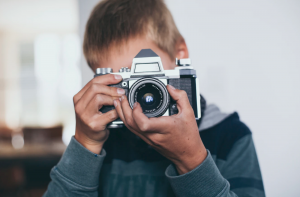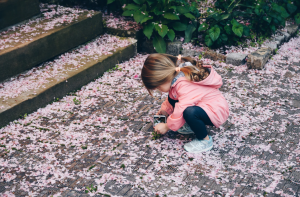The benefits to learning photography are boundless and multifaceted. By tapping into this in our teaching practices, we can enhance our student’s educational experiences.
Integrating photography does not have to be done through the lens of art education. Just like other artistic mediums, we can look at photography as a tool to enhance learning in other areas.

Below are some examples of how to actualize this for different age groups
- Creating a photography scavenger hunt- where students are tasked with documenting objects in their surroundings that relate to a certain unit or theme. (grades K-4)
- In the instruction of other languages (such as French,) have children take photos of everyday objects around the school or in their homes. Then have them determine the name for the object in a second language, and write a sentence about it (grades 2-5)
- Take a class nature walk and task each student with taking a picture of an object they find interesting along the walk. Have them write a story about the object; where it came from, how it ended up where it was found, ect. (grades 3-7)
- Have each child create a blog, and respond to weekly prompts with text and photos that they take on their own (grades 5-8)
Implementing photography into the classroom may be easier said than done- as the logistics of tasking children with taking photos can become complicated. Even in an age where smartphones are commonplace and equipped with high resolution cameras, it is unrealistic to assume students have access to this high end technology at home. Regardless of the socio-economic restrictions involved, many adults are apprehensive (to say the least) when it comes to allowing young children access to their personal technology. Therefore, it is important to teach proper camera care and etiquette before beginning photography projects with younger elementary students.

In addition, it is important to teach students to be respectful when it comes to the photos they are taking. Let them know they must always ask for permission to take photos of somebody else, and that they should be mindful of the photos they take. Although we live in an age of smartphone cameras where people take dozens of photos of the same scene or object, having children put thought into what they choose to take photos of will lead to higher quality work.

All things considered, photography is an amazing tool to explore and incorporate into classroom instruction as elementary teachers. By being aware of the repercussions and cautions to take before implementing photography units and lessons, we can help our students grow behind the lens of a camera.
– Katie, Lauren and Alexa